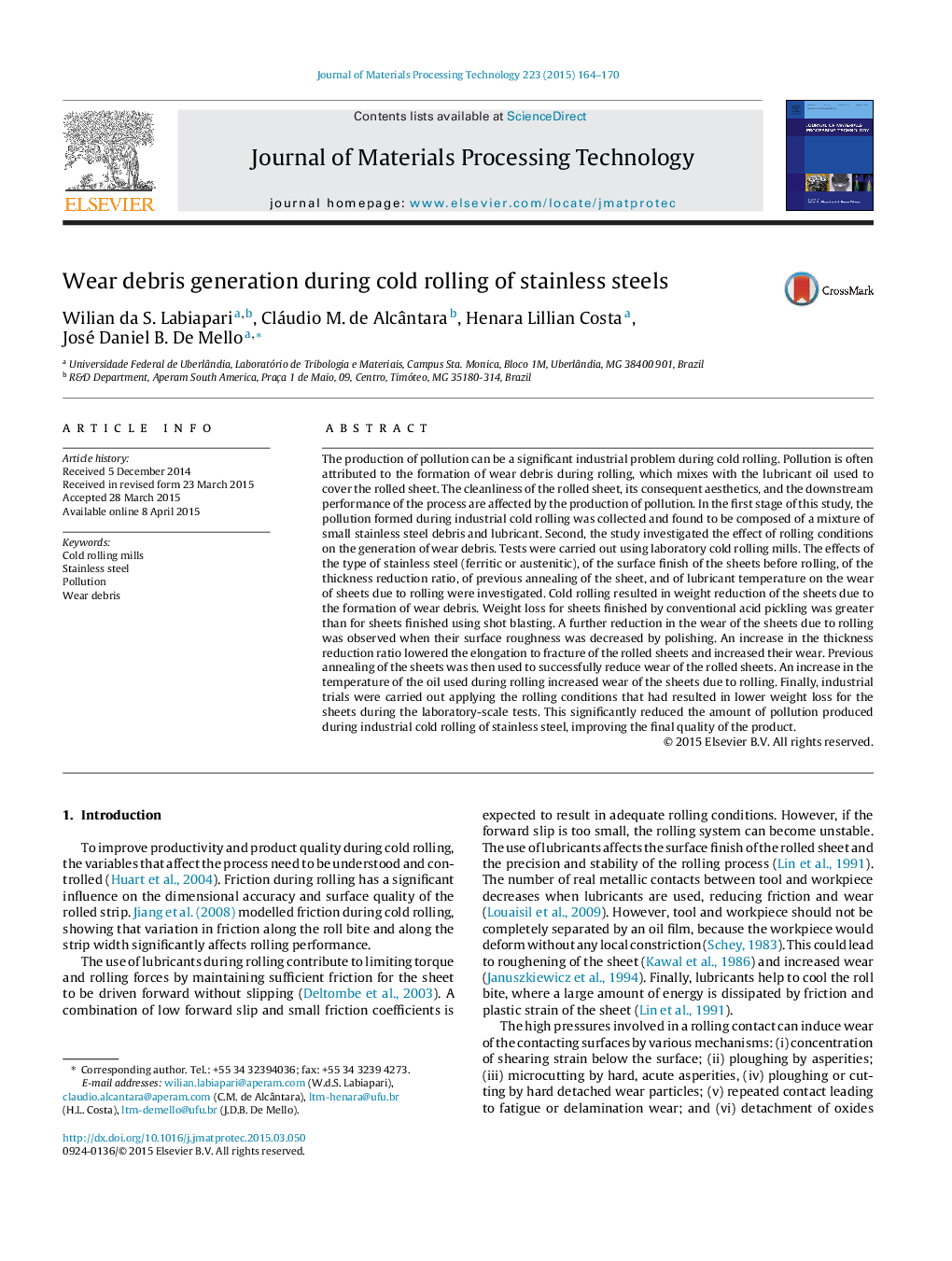| کد مقاله | کد نشریه | سال انتشار | مقاله انگلیسی | نسخه تمام متن |
|---|---|---|---|---|
| 792895 | 1466744 | 2015 | 7 صفحه PDF | دانلود رایگان |
• Pollution produced in industrial stainless steel cold rolling contained wear debris.
• The effect of rolling parameters on the formation of wear debris was investigated.
• Laboratory rolling mill tests showed less debris for smoother and softer sheets.
• A higher temperature of the rolling lubricant resulted in more wear debris.
• Industrial trials agreed with laboratory tests, reducing formation of pollution.
The production of pollution can be a significant industrial problem during cold rolling. Pollution is often attributed to the formation of wear debris during rolling, which mixes with the lubricant oil used to cover the rolled sheet. The cleanliness of the rolled sheet, its consequent aesthetics, and the downstream performance of the process are affected by the production of pollution. In the first stage of this study, the pollution formed during industrial cold rolling was collected and found to be composed of a mixture of small stainless steel debris and lubricant. Second, the study investigated the effect of rolling conditions on the generation of wear debris. Tests were carried out using laboratory cold rolling mills. The effects of the type of stainless steel (ferritic or austenitic), of the surface finish of the sheets before rolling, of the thickness reduction ratio, of previous annealing of the sheet, and of lubricant temperature on the wear of sheets due to rolling were investigated. Cold rolling resulted in weight reduction of the sheets due to the formation of wear debris. Weight loss for sheets finished by conventional acid pickling was greater than for sheets finished using shot blasting. A further reduction in the wear of the sheets due to rolling was observed when their surface roughness was decreased by polishing. An increase in the thickness reduction ratio lowered the elongation to fracture of the rolled sheets and increased their wear. Previous annealing of the sheets was then used to successfully reduce wear of the rolled sheets. An increase in the temperature of the oil used during rolling increased wear of the sheets due to rolling. Finally, industrial trials were carried out applying the rolling conditions that had resulted in lower weight loss for the sheets during the laboratory-scale tests. This significantly reduced the amount of pollution produced during industrial cold rolling of stainless steel, improving the final quality of the product.
Journal: Journal of Materials Processing Technology - Volume 223, September 2015, Pages 164–170
